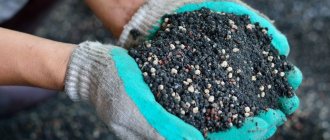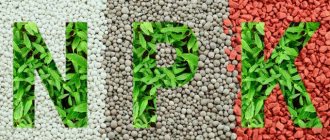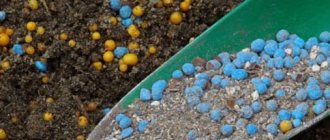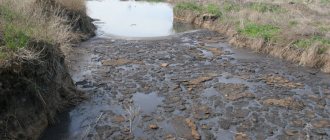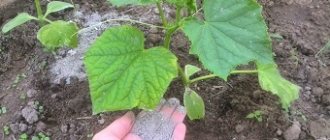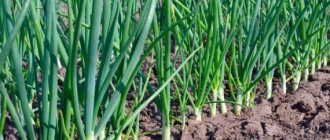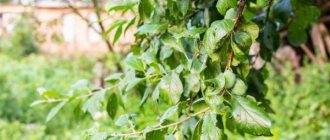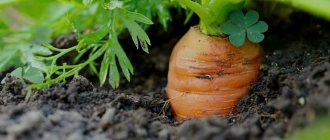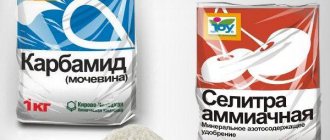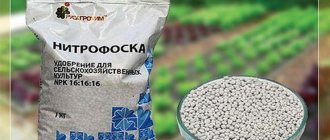Characteristics and classification of mineral fertilizers
Mineral fertilizers are those consisting of salts of various chemical elements necessary for plant nutrition. They can be produced in the form of powders, granules, concentrated solutions or suspensions.
Depending on the composition of the components, mineral fertilizers are classified as follows:
- nitrogen → types and applications;
- phosphorus → types and application;
- potassium → types and application;
- complex;
- microfertilizers → types and application.
The first three types contain one macroelement and are therefore called simple. Complex fertilizers include at least two main macroelements. According to the production method, they can be mixed, complex or complexly mixed, but this characteristic is not of fundamental importance for the average summer resident. Microfertilizers include single- or multicomponent mixtures of microelements.
According to the degree of concentration of nutrients, mineral compositions are ordinary (non-concentrated), concentrated or highly concentrated. On packages this characteristic is indicated indirectly, in the form of a percentage of the content of a particular substance. However, it is important, determining not only the application rates, but also the economic benefits of the fertilizer.
Microfertilizers
There is another group of mineral fertilizers - microfertilizers, which include microelements: zinc, copper, manganese, iodine, iron, molybdenum, boron and so on.
Microfertilizers are used only when there are few microelements in the soil. For example, peat soils contain almost no copper, and sod-podzolic soils lack molybdenum. Microfertilizers promote the development of the root system and increase immunity. Microfertilizers are good for treating seed, strictly observing the dosage (indicated on the package). They promote the development of the root system of plants, protect them from diseases, increase immunity and productivity. Complex microfertilizers often contain organic matter and growth stimulants. Representatives of such fertilizers: Apion, Terracom-tem, Ekost-1 and others.
As you can see, there are a lot of different fertilizers that can significantly increase productivity and improve the appearance of plants. What mineral fertilizers do you use? Share your secrets)
Types and list of nitrogen fertilizers
Nitrogen is the first of the macroelements that plants need to build tissues and ensure protein synthesis. In mineral salts it can be in different forms, and depending on this, nitrogen fertilizers are divided into the following types:
- Nitrate. This group includes calcium and sodium nitrate (see → the use of calcium nitrate as a fertilizer for the garden, → the use of sodium nitrate).
- Ammonium. These include ammonium and sodium ammonium sulfates and ammonium chloride.
- Amide. This group is represented by urea (also known as urea). Find out → how to use urea as a fertilizer + reviews.
The most concentrated of these fertilizers is urea. It contains about 46% nitrogen. In second place is ammonium nitrate (see → application as a top dressing), which belongs to the combined nitrate-ammonium variety of nitrogen salts (34-37%). Ammonium sulfate contains about 21% nitrogen, and ordinary nitrate contains 16-17%.
Important! Nitrogen fertilizers can act faster or slower, and also have different effects on soil acidity (see → types of nitrogen fertilizers). Fast-acting saltpeter includes all types of nitrate. Ammonium and amide fertilizers act slowly.
Types and list of phosphate fertilizers
Fertilizers, the main active ingredient of which is phosphorus, are classified according to the degree of availability of this element. It depends on the ability of the salt to dissolve in water and pass into the soil solution:
- Water-soluble phosphorus-containing salts. Includes regular and double superphosphates and superphosphate (see → how to use double superphosphate as a fertilizer + reviews). Phosphorus availability is high.
- Limited soluble phosphorus-containing substances. These include waste slag, precipitate, and bone meal. They do not dissolve in water, but are soluble in weak acids - for example, 2% citric acid. Phosphorus availability is average.
- Sparingly soluble phosphorus-containing substances. This group includes phosphate rock, which is completely soluble only in strong acids (nitric or sulfuric). In weakly acidic solutions its solubility is only partial, and in water it is completely absent. Phosphorus availability from this fertilizer is low.
Double superphosphate contains the most phosphorus - about 49%. Superphos (up to 40%) can also be classified as concentrated phosphorus fertilizers. Ordinary superphosphate is an ordinary fertilizer: it contains no more than 20% phosphorus.
On what soils can phosphates be used? (click to expand)
Tip #1. Water-soluble phosphates can be used on any soil. Substances with limited and poor solubility are effective only on acidic soils.
Phosphorus fertilizers
Simple superphosphate
This mineral supplement contains about 20% phosphorus anhydride. Superphosphate is the best mineral fertilizer for all types of soils that need this element.
It is not flammable, so it does not require storage conditions.
Its application depends on the degree of soil moisture. With a high content of liquid fractions, this fertilizer can be applied as a top dressing during the growth and development of plants.
For the capricious queen of the garden, roses, superphosphate has become an ideal source of nutrition.
When using it for flowers, the result can be seen very quickly. The stems become more powerful, the flower stalks become dense, and the color becomes much brighter.
Application rates are about 0.5 centners per 1 hectare. Recommended for continuous method.
Double superphosphate
This phosphate compound has a higher concentration of useful substances than its predecessor. It also differs in that it does not contain useless elements as ballast, for example, CaSO4. Therefore, it is more economical than its counterpart.
Manufacturers produce this substance based on GOST 16306-80. The amount of active ingredient phosphorus varies from a change in the place of extraction of the original product, ranging from 32 to 47%.
Double superphosphate is ideal for flowers, just like plain
. For example, it should be applied to roses in the fall so that their roots are prepared for winter and can safely withstand frosts.
Phosphorite flour
The main characteristics of this mineral supplement are described in GOST 571-74. Release standards have not changed for 40 years. This is the unchanged white powder that was used to fertilize fields even under Brezhnev.
Phosphorite flour is used on acidic soils, for all fruit and vegetable crops, as well as cereals.
It helps plants fight pests and diseases by increasing the plants' own immunity. Increases winter hardiness of most crops.
The content of the main active ingredient is at least 19%. And this “flour” contains even more calcium – about 35%.
The application rates for phosphate rock are about 3-3.5 centners per hectare.
Types and list of potash fertilizers
Potassium is the third macronutrient that belongs to the basic nutritional elements of plants. If it is the main component of the fertilizer, it belongs to the potassium group.
Potash fertilizers are produced from potash ores and are classified according to the degree of processing of the feedstock:
- Raw salts. These are potassium-containing minerals that have not undergone any chemical treatment. They were simply mechanically crushed and ground. This variety includes kainite and sylvinite.
- Concentrated salts. These fertilizers are obtained through chemical processing. These include potassium magnesium, potassium sulfate and potassium chloride. Find out → how to use potassium sulfate as a fertilizer + reviews.
Raw salts have a low potassium concentration - only 10-15%. In addition, they contain many ballast substances such as oxides of sodium, magnesium, chlorine and sulfur.
The concentration of potassium in chemically produced salts is much higher. So, for example, in potassium chloride it is 60%, in potassium sulfate – up to 50%, in potassium magnesia – 29%.
The use of simple mineral fertilizers requires considerable experience and caution from the gardener. If used incorrectly, they can easily be overdosed or converted into forms that are difficult for plants to reach.
Complex mineral fertilizers: names, compositions, prices
Complex mineral fertilizers can be two-component, complete and enriched with microelements. They are much more convenient and cost-effective to use than simple ones.
“When mixing simple fertilizers, gardeners who do not have sufficient knowledge of agrochemistry make a lot of mistakes. And those who at least occasionally take soil samples to the laboratory and do a salt test are few in a million. Therefore, if we recommend mineral fertilizers to our summer residents, then only complex ones and preferably with a low concentration of elements.”
Y. Rudnikova, plant protection station specialist
The oldest of this group of fertilizers, used back in the 20th century, are the following complexes:
- Ammophos. Two-component nitrogen-phosphorus complex. There is more phosphorus in the composition than nitrogen - 52% versus 12%. Nitrogen is in ammonium form. Find out → how to use Ammophos as a fertilizer in the garden.
- Nitroammophos. A two-component complex in which nitrogen is present in two forms - nitrate and ammonium. The composition contains approximately equal amounts of phosphorus and nitrogen.
- Potassium nitrate. Two-component nitrogen-potassium complex. Potassium in the composition is about 38%, nitrogen in nitrate form is about 13%. Find out → how to use potassium nitrate as a fertilizer + reviews.
List of all Classic mineral fertilizers (click to expand)
- Monopotassium phosphate. Two-component complex of potassium (33%) and phosphorus (50%).
- Nitroammofoska (aka azofoska). A complete NPK complex with a water-soluble form of phosphorus, potassium, nitrate and ammonium nitrogen. The percentage of elements depends on the brand.
- Ammofoska. A complete NPK complex with an approximately equal ratio of elements (12:15:15). Contains microelements - sulfur, magnesium and calcium. Find out → the use of Ammophoska as a mineral fertilizer for the garden.
- Diammofoska. A complete NPK complex with double the concentration of phosphorus and potassium compared to conventional ammophoska. Contains nitrogen in ammonium form and sulfur, zinc, magnesium, calcium, iron in the form of impurities. Find out → instructions for use of Diammofoska, composition and properties.
The modern agrochemical industry produces many other complex mineral fertilizers:
| Trademark | Manufacturer | Description | average price |
| "Agricola" see → how to apply fertilizer | TPK "Technoexport" | A line of fertilizers in granular and liquid form. Includes many formulation options tailored specifically to the needs of specific crops. It is easy to use and highly effective. | 30 rubles for 25 g |
| "Fertika" | JSC "Fertika" | A line of fertilizers developed taking into account the seasonal needs of plants. Includes both purely mineral and organomineral mixtures. Efficiency is high. | 60 rubles for 20 g |
| “Aquarin” see → how to apply fertilizer | Buysky chemical plant | Inexpensive water-soluble complexes in different packaging, selected for different crops and seedlings. | 12 rubles for 20 g |
| "Joy" | Kirovo-Chepetsk Chemical Company | A large line of granular complexes developed both by season and by crop. | From 43 rubles per 100 g |
| "Florovit" | Florovit, Poland | High-quality fertilizers in different forms of release - granules and concentrated solutions. Separate complexes are produced for different types of plants. | 280 rubles per 1 kg 130 rubles per 240 ml |
Modern ready-made fertilizers are a real boon for beginning plant growers who cannot independently calculate dosages taking into account the needs of a specific plant type, growing season and season.
The range of complex mineral fertilizers today is so wide that any summer resident can choose one that is suitable for himself in terms of price and composition.
General tips for use
All fertilizers are different, and so are mineral fertilizers.
Their difference is not only in composition, but also in the method of application. They differ in some features in application :
- The container in which fertilizers are diluted cannot be used for cooking.
- It is better to store mineral compositions in closed packages, away from air.
- Compacted fertilizers should be passed through a sieve before use.
- When adding mineral mixtures, in no case should you exceed the prescribed dose .
- When carrying out spring or summer fertilizing, do not allow mineral fertilizer to get on the plant, but it is better to rinse well with water after the procedure.
- It is better to immediately embed dry mixtures under the top layer of soil for better access to the roots.
- Before adding mineral compounds, it is best to pre-moisten the soil .
- If there is a lack of nitrogen, it is better to add phosphorus and potassium along with it, for greater efficiency.
- Mineral mixtures are added to clay soils in larger quantities, and to sandy soils - in smaller quantities, but their quantity increases.
- Regions with high rainfall apply fertilizers before planting, directly into the holes. It is better to pre-mix the mixture with soil.
- By alternating mineral and organic fertilizers , you can achieve the best results.
- If the above-ground parts of plants grow excessively, it is better to use foliar feeding.
- Fruit and berry plants receive the necessary fertilizers from the young foliage in the spring by foliar feeding. And potassium is applied in the fall at a depth of 10 cm.
- Mineral mixtures are scattered over the surface of the earth , then embedded in the soil.
- The most effective way to fertilize the soil is to combine organic and mineral mixtures, but then minerals should be added three times less than the norm .
- Granular mixtures have proven themselves best, and it is best to apply them in the fall.
- Greenhouses are even more in need of fertilizing with mineral fertilizers than open ground.
Note! Mineral fertilizers have a beneficial effect on the composition of the soil and plant growth, the fruits become larger and larger in size, the most important thing is not to exaggerate the required amount in order to avoid the accumulation of harmful substances in the fruits.
Microfertilizers: names, manufacturers, prices
In addition to macroelements, which plants need in large quantities, experienced plant growers must pay attention to fertilizing with microelements. They are especially relevant if the main fertilizers are simple or complex, but not enriched with microelements.
Microfertilizers can also be simple or complex in composition. According to the form of the elements they contain - ordinary salts and acids or chelates:
| Microfertilizer | Composition of microelements | Shape of elements |
| Boric acid ⊕ application of fertilizing | Bor | Acid |
| Manganese sulfate | Manganese and sulfur | Salt |
| Zinc sulfate | Zinc and sulfur | Salt |
| Copper sulfate | Copper and sulfur | Salt |
| Ammonium molybdate | Molybdenum with nitrogen in the form of ammonium | Salt |
| Iron chelate ⊕ fertilizer application | Iron | Chelate |
| Manganese chelate | Manganese | Chelate |
| Zinc chelate | Zinc | Chelate |
| "Siliplant" | Silicon, iron, manganese, zinc, cobalt, vanadium, copper | Chelate |
| "Mikrovit" | Sulfur, manganese, boron, iron, copper, molybdenum, cobalt | Chelate |
Chelated microfertilizers are preferable to salt ones, since the bioavailability of elements in them is maximum.
Chelated microfertilizers cannot be considered purely mineral. The microelements in them are associated with organic chelating agents. However, they have the great advantage of easy penetration into plant tissue and absolute safety for plants.
Eco-friendly fertilizers
has been developing and producing mineral and organic fertilizers of various types for almost 30 years. Complex water-soluble fertilizers (for berries, for vegetables, universal), microfertilizers with medicinal properties, fertilizers with humic acids for seedlings, organic ones based on seaweed and others. The effectiveness of Orton products was proven back in the 1990s in the popular TV show “Our Garden”, as well as in numerous tests on various vegetable and fruit crops.
All natural Orton products are tested for toxicological and biological safety. Do not contain “harsh chemicals”. Therefore, they are absolutely harmless to people, animals, soil and even pollinating insects - bees and bumblebees. Thanks to the use of growth and fruit formation stimulants "Orton", it is possible to increase the yield by 1.5 times.
At the same time, both the weight and size of the fruit improve, and the content of vitamin C and sugar in them increases. This is achieved by replenishing the deficiency of phytohormones contained in plant cells. When there is little sun and heat, phytohormones are produced in insufficient quantities. Spraying with Orton stimulants helps plants “get” the required amount of phytohormones and increase productivity by 50%. In addition, the fruits turn out juicy, large, aromatic and tasty - just like in the south!
You may be interested in: Fertika fertilizer - assistant to gardeners
Methods of applying mineral fertilizers
Mineral fertilizers can be used in all ways. They are introduced into the soil in preparation for sowing or after harvesting, and liquid nutrient solutions are prepared from them for root or foliar feeding during the growing season.
Separately, it is worth noting this method of application as compost enrichment (see → how to make compost step by step) . Pure organic matter is not always rich in phosphorus or potassium, so in some cases it is advisable to sprinkle it with phosphorus-potassium mineral complexes.
Timing for applying mineral fertilizers
The timing of application of mineral fertilizers depends mainly on their composition:
- nitrogen is used in the spring, when the plant’s need for nitrogen is highest;
- phosphorus and potassium - in summer and autumn.
The composition of the soil partly influences the timing of application. For example, sedentary ammonium nitrogen compounds can be used not only in spring, but also in autumn, after harvesting.
The functions of the three macroelements are complex and varied. Each of them influences all physiological processes. But in order not to get confused, you can remember the basic scheme: nitrogen is needed for leaves, phosphorus for fruits, potassium for roots. Based on it, it is easier to figure out than to feed the plants in a specific phase of the growing season.
Reviews on the effectiveness of mineral fertilizers
Mineral fertilizers are used not only in gardens and vegetable gardens. Very often they are used by lovers of indoor floriculture. It is difficult to use organic fertilizers at home. They are also popular among experimenters who grow plants hydroponically and among greenhouse owners:
“In open ground I use only organic matter and bacterial solutions. But in a winter garden it is impossible to do without “mineral water” - the conditions are too specific. I use Fertika for root feeding and Siliplant for leaves. With their help, it was possible to tame even the capricious eucalyptus. The bougainvilleas are blooming beautifully, the orchids are fruiting and multiplying, the banana survived the winter well” (Olga, Kaliningrad).
Use of mineral supplements
The use of mineral compositions is allowed throughout the growing season. It is better to apply certain compounds in early spring, while other types of fertilizers are best applied in the fall while digging the soil. There are also mineral compounds that need to be applied during the summer season. But when using any type of mineral fertilizer, certain basics must be observed:
- Mineral compositions must be stored out of the reach of children and pets. It is advisable that it be a dark and dry room, always away from food products. Mineral dry compositions are stored in vacuum packaging. Liquid mixtures should be stored in tightly sealed plastic containers.
- During long-term storage, dry mineral compositions can cake and become compacted (crumple). Before preparing working solutions, caked lumps must be crushed or crushed. Additionally, the dry mixture can be passed through a colander or sieve (the dishes should not be used for further cooking).
- When preparing the working solution, you need to use special utensils. The compositions must not be mixed in wooden containers. Do not use food preparation or storage containers to mix minerals.
- The preparation of working solutions must follow a certain scheme. The packaging of any mineral mixture describes the dosage and method of preparing active mixtures. It is important to strictly adhere to the prescribed rules. The use of concentrated formulations negatively affects the condition of agricultural crops (the roots can get burned). A low concentration of active components in the working solution will be ineffective.
- Mineral fertilizers can be used as root fertilizer or incorporated into the soil. When using the root method of fertilization, it is important to ensure that the working solution does not get on the vegetative structures of the plant (leaves, trunk, young shoots), this can cause them to burn and die. The nutritional composition is applied exclusively to the soil. Before fertilizing, it is important to moisten the soil well with plain water. The final stage of applying root nutrition is spraying the surface of the crops with warm running water (this is necessary in order to wash off the active components of the fertilizer that accidentally got on the top of the crop).
- Fertilizers in dry form or in the form of granules, which are applied to the soil, must subsequently be covered with a layer of soil. First, you need to dig a shallow trench near the tree trunk of the crop, add the recommended dose of dry fertilizer, then sprinkle it with soil. It is important that the trench is not too deep, otherwise the root system of agricultural crops will not be able to “absorb” useful substances.
- When using liquid concentrated mineral compositions, the concentrate must be mixed with ordinary cold water. Dosages and proportions are indicated in the instructions included with any mineral fertilizer.
- It is recommended to apply nitrogen fertilizers in combination with potassium or phosphorus. If you use one nutrient, its effectiveness will sharply decrease.
- When fertilizing clay soils, the dosage of nutrients should be increased. If mineral fertilizing is applied to sandy soil, then the concentration of the working composition decreases, and the total amount of fertilizing, on the contrary, increases.
- The most practical are mineral fertilizers in the form of granules. The active composition is applied in the fall while digging the soil.
- To achieve maximum effect, it is recommended to alternate mineral compositions with organic fertilizers (manure, poultry droppings, ash, etc.).
A variety of mineral fertilizers allows you to choose the type of fertilizer that is needed by agriculture in a certain period. It is important to follow the scheme for applying active compounds, as this will subsequently have a beneficial effect on the immunity of crops and their productivity.
